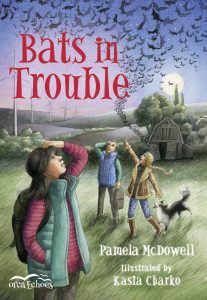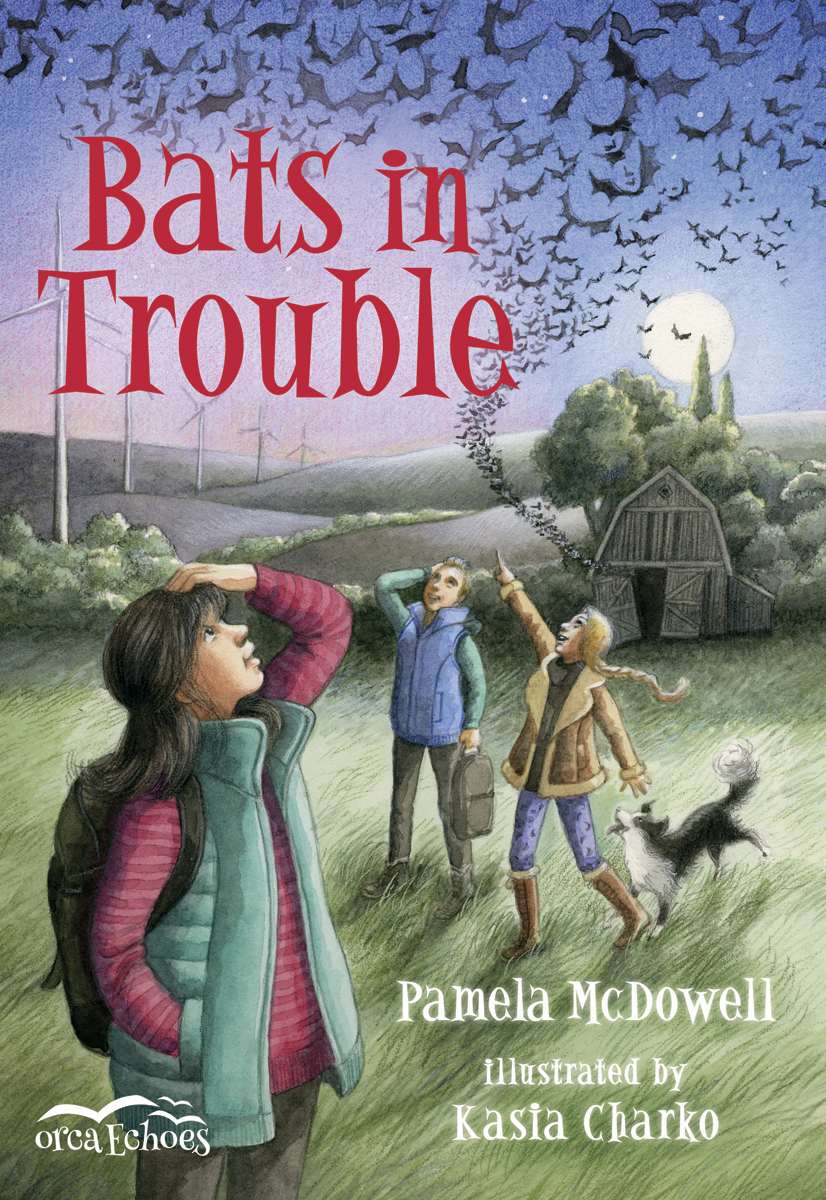The following post is written by Pamela McDowell, author of Bats in Trouble, which will be coming out in Fall 2017.
“There are so many cute animals out there, why would you write about bats?” My mother wasn’t impressed. She has never forgotten her personal bat encounter, when she was nine years old and alone in an outhouse. Some memories are hard to shake.
My mom isn’t the only person who asks this question when I mention my next book, Bats in Trouble. First, I have to say that bats are pretty amazing creatures. They are, in fact, the only mammal that actually flies, and in Canada, they are the primary predator of night-flying insects, like moths, beetles, and mosquitoes. One bat can eat hundreds of insects in an hour. Without bats, our gardens and farms would be devoured by bugs.
 Because Canada is so cold in the winter, bats have two options when the temperature lowers: hibernate or migrate. When bats hibernate, their body temperature drops to about the same as the rocks in the cave they have chosen for the winter. Hibernating for eight months of the year helps to extend a bat’s life. The little brown bat, the most common bat in North America, often lives for 20 years. A female may have one or two pups a year and, though only about half of them may survive their first winter, the ones that do will live for a long time.
Because Canada is so cold in the winter, bats have two options when the temperature lowers: hibernate or migrate. When bats hibernate, their body temperature drops to about the same as the rocks in the cave they have chosen for the winter. Hibernating for eight months of the year helps to extend a bat’s life. The little brown bat, the most common bat in North America, often lives for 20 years. A female may have one or two pups a year and, though only about half of them may survive their first winter, the ones that do will live for a long time.
Migration is a lot more difficult, and dangerous. High-rise buildings, radio towers, and wind turbines can be tough to avoid when flying at high speeds, so migrating species, like the hoary bats featured in Bats in Trouble, are estimated to live only six or seven years. This is where my interest was piqued. I saw wind turbines sprouting from the hills north of Waterton Lakes National Park, and I wondered if they had any impact on bats and other migratory flyers.
And the second reason I chose to write about bats? Kids are curious about them. Folklore has linked bats to vampires and Halloween, but there’s really nothing supernatural about them. Amazing, yes, but not scary. I hope that by the time young readers have finished the story, they will be inspired to explore nature at night, when a whole other world comes alive.
Camping is a fabulous way to immerse kids in nature. Sleeping outside, even in a tent in the backyard, is an adventure, but it can be simpler than that. There are probably little brown bats in your neighborhood, swooping and diving among trees and between houses. So stay up past bedtime and go for a slow, quiet walk together, looking up high, not at your feet. If you can get away from bright city lights and the night is clear, study the stars. Can you find Polaris and the Big Dipper? Can you see the International Space Station or satellites blinking their way across the sky? Maybe you’ll be lucky enough to spot a shooting star. Exploring the dark of night can be a thrill for kids and a great way to connect with nature. So get outside and go wild!
Watch Pamela McDowell’s interview and learn more about Bats in Trouble:
While you’re waiting for Bats in Trouble to be released, try reading the first two books in the series featuring animal-activist Cricket McKay: Ospreys in Danger and Salamander Rescue.

Pamela McDowell’s first career was in education, teaching junior high and high school. She began writing when she left teaching and has now written more than twenty nonfiction books for children. Pamela grew up in Alberta and enjoys writing about the diverse animals and habitats of her home province. Pamela lives in Calgary, Alberta, with her husband, two kids and an Australian shepherd. For more information, visit www.pamelamcdowell.ca.

